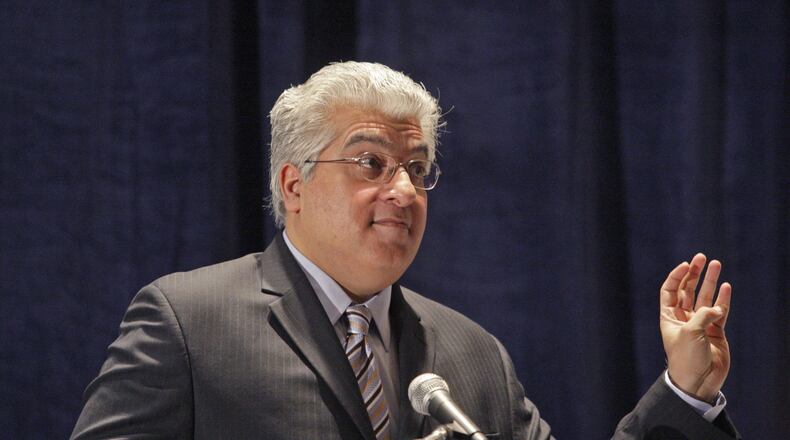The Georgia economy will pick up speed next year with a tail wind coming from a series of expected interest rate cuts by the Federal Reserve, according to an analysis released Wednesday by the Economic Forecasting Center at Georgia State University.
With Fed help, the state will add 71,800 jobs in 2025 and more than 90,000 the year after, said Rajeev Dhawan, the center’s director.
But without assertive rate cuts, there is a better than even chance of an economic downturn, he said.
“The labor market is weakening. They need to be aggressive to make sure that the soft landing is not hard,” Dhawan said.
The state has added about 78,000 jobs in the past 12 months, far slower than the pace of the two previous years, according to the Bureau of Labor Statistics. Moreover, expansion is not only about the number of jobs, Dhawan said. “It’s about job quality.”
An outsized share of the positions being added are in hospitality and health care, he said.
“It’s important to look not only at the number of new jobs, but also at their purchasing power,” he said. “Less than 10% of job growth (in the past nine months) has been in high-paying sectors such as corporate, manufacturing, finance, wholesale and information technology.”
High interest rates, the result of a campaign by the Fed in 2022 and 2023 to tame inflation, raise the costs of borrowing for both consumers and companies. That discourages expansion, spending and hiring, and historically has often spun the economy into recession.
On the long list of concerns for small companies, interest rates were “40-something” four years ago, said Holly Wade, executive director of research for the National Federation of Independent Business. “It’s now number 13,” said Wade, a speaker at the Georgia State event.
The NFIB lobbies for tax and other public policies on behalf of smaller firms, often those with just a handful of employees. While inflation has eased, those companies are still coping with the effects of those price hikes, she said.
“How much can they increase wages without hurting the bottom line?” she said. “How much can they pass along without hurting their competitiveness?”
The Fed has been hoping for a “soft landing,” in which inflation falls and growth slows, but does not stop.
Inflation is now below 3% — down dramatically from 2023, but still slightly higher than the Fed’s 2% target — and the central bank has left rates at a two-decade high for more than a year. Meanwhile, various economic signals are flashing orange, nationally and in Georgia.
After a burst of growth, travel spending has leveled off. Film productions have been scant. Visits to theme parks have ebbed. Georgia-based Home Depot and archrival Lowe’s both recently reported dips in sales and reduced guidance for the coming year.
Meanwhile, some restaurants have seen dipping sales, including McDonald’s, which trimmed menu prices, Dhawan said. “If Mickey D’s is cutting back, that means something.”
Recent sales tax receipts have declined, a sign consumers and businesses have become more hesitant about spending money, Dhawan said.
“People are being very cautious,” he said. “Either they are not getting pay raises or there are not that many high-paying jobs.”
Georgia will add 57,100 jobs this calendar year and only 11,500 of them will be higher-paying positions, he said.
There’s no sign a downturn has begun, in Georgia or nationally, but hiring has slowed.
The Fed’s rate-setting committee meets Sept. 17 and 18. Fed Chairman Jerome Powell has recently signaled a readiness to cut, suggesting he is confident about the dampening of inflation and more worried now about the weakness in the labor market.
During its inflation-fighting, the Fed hiked its benchmark rate from near zero to 5.33%, changes that were reflected in the cost of auto loans, mortgages and credit card charges. Dhawan predicted cuts of 1.75 percentage points by next spring.
The Fed will slice a quarter-point in September, then cut more aggressively in November and December, Dhawan said. “Whatever they do, they will do it quickly, in the next three to six months.”
About the Author
Keep Reading
The Latest
Featured


